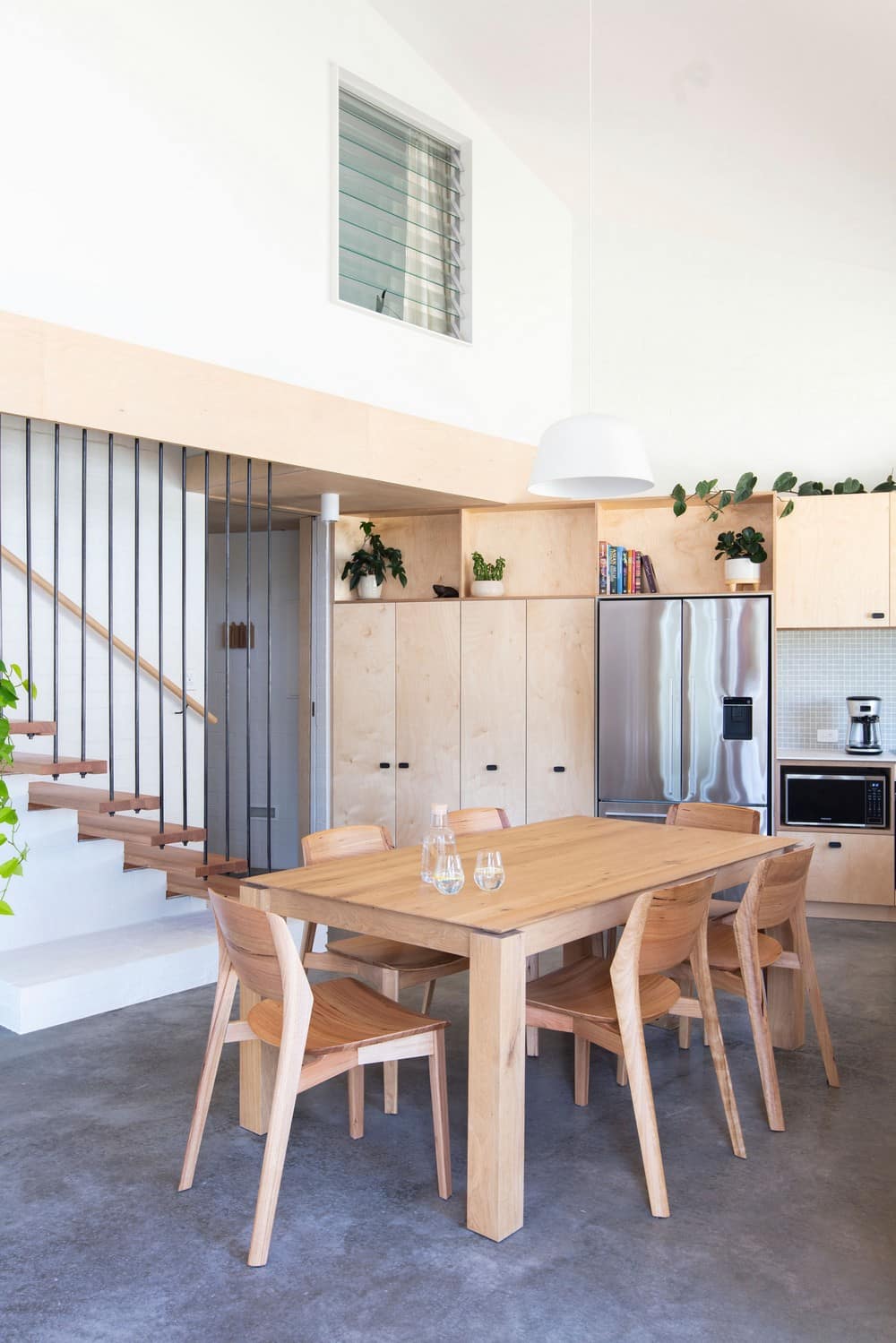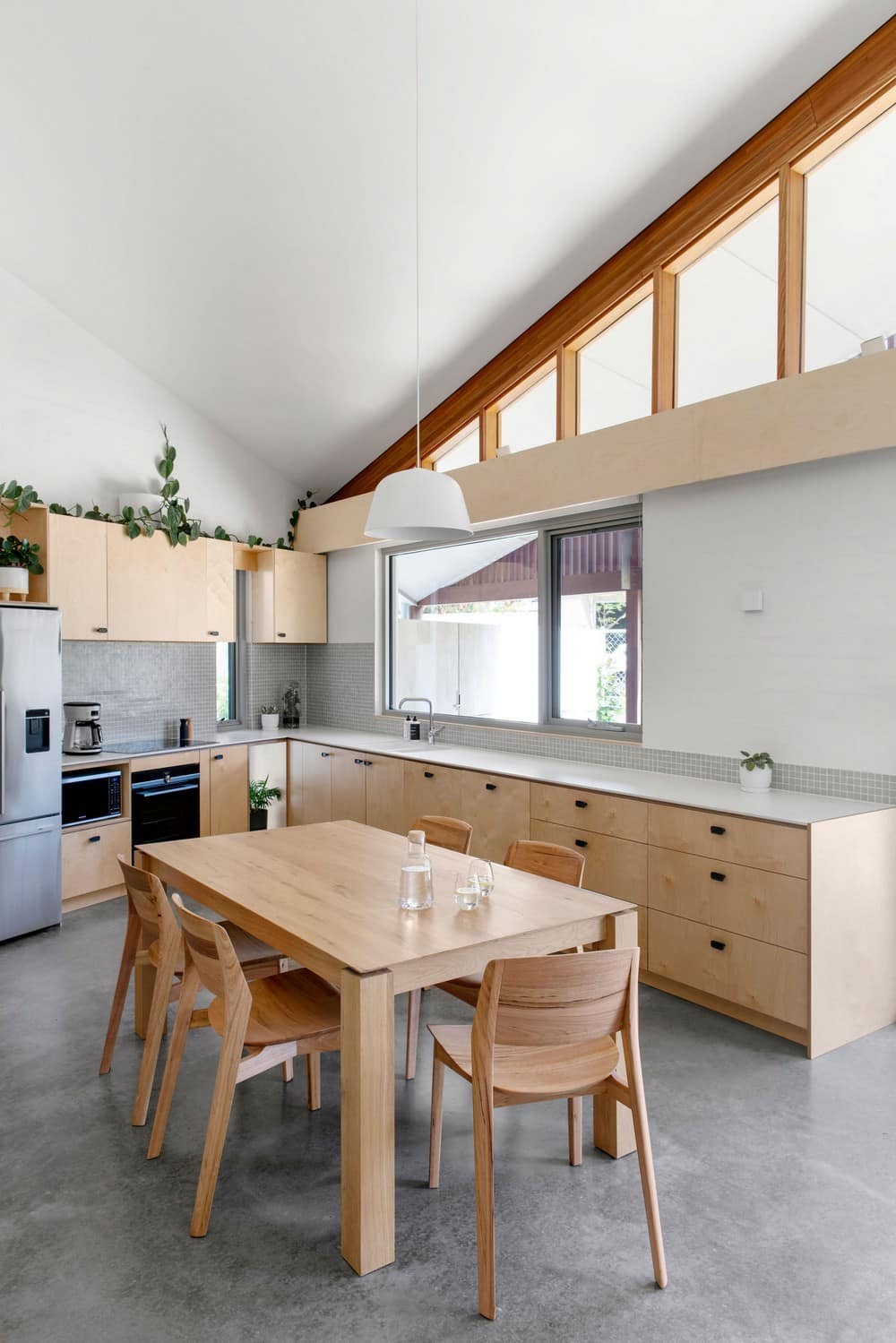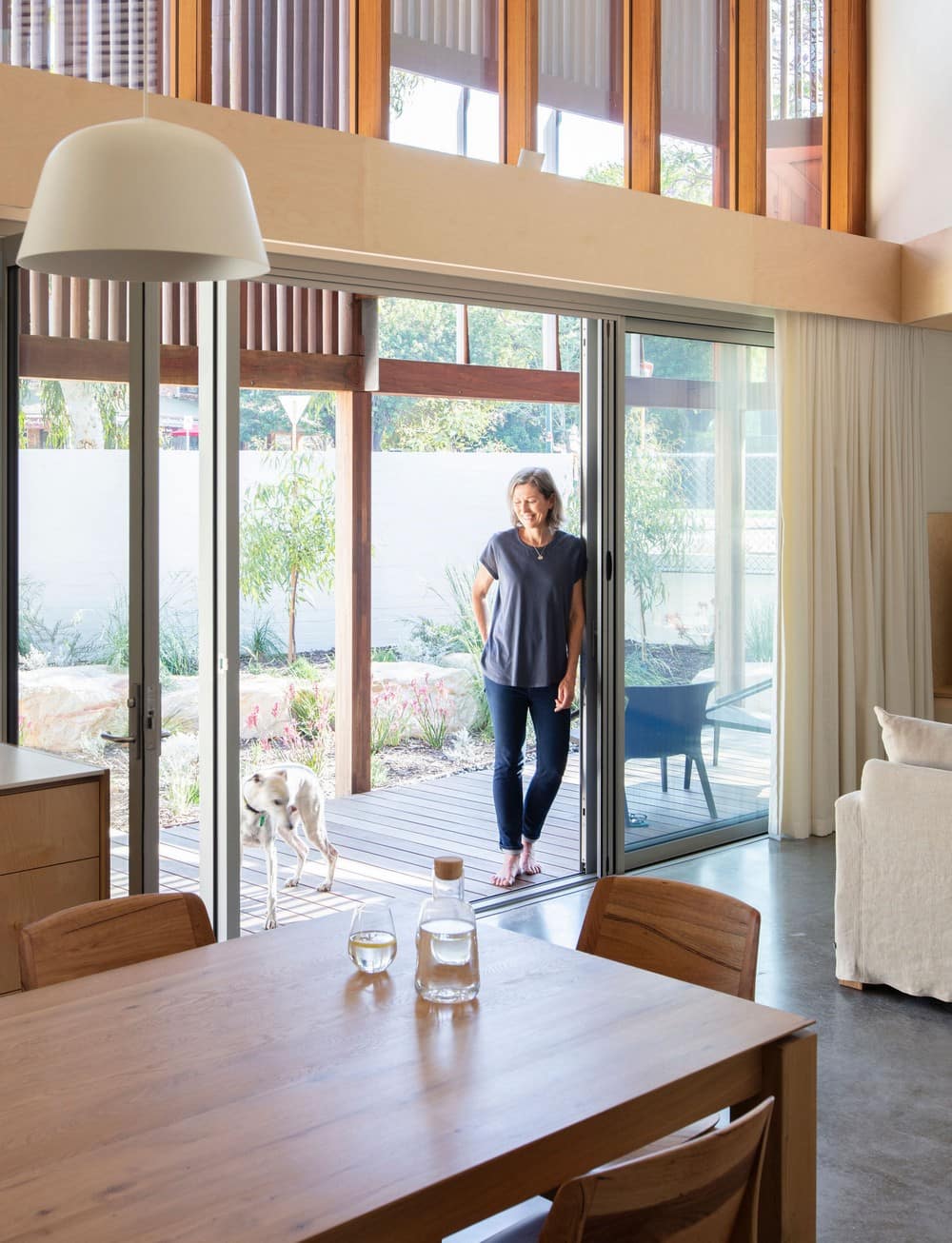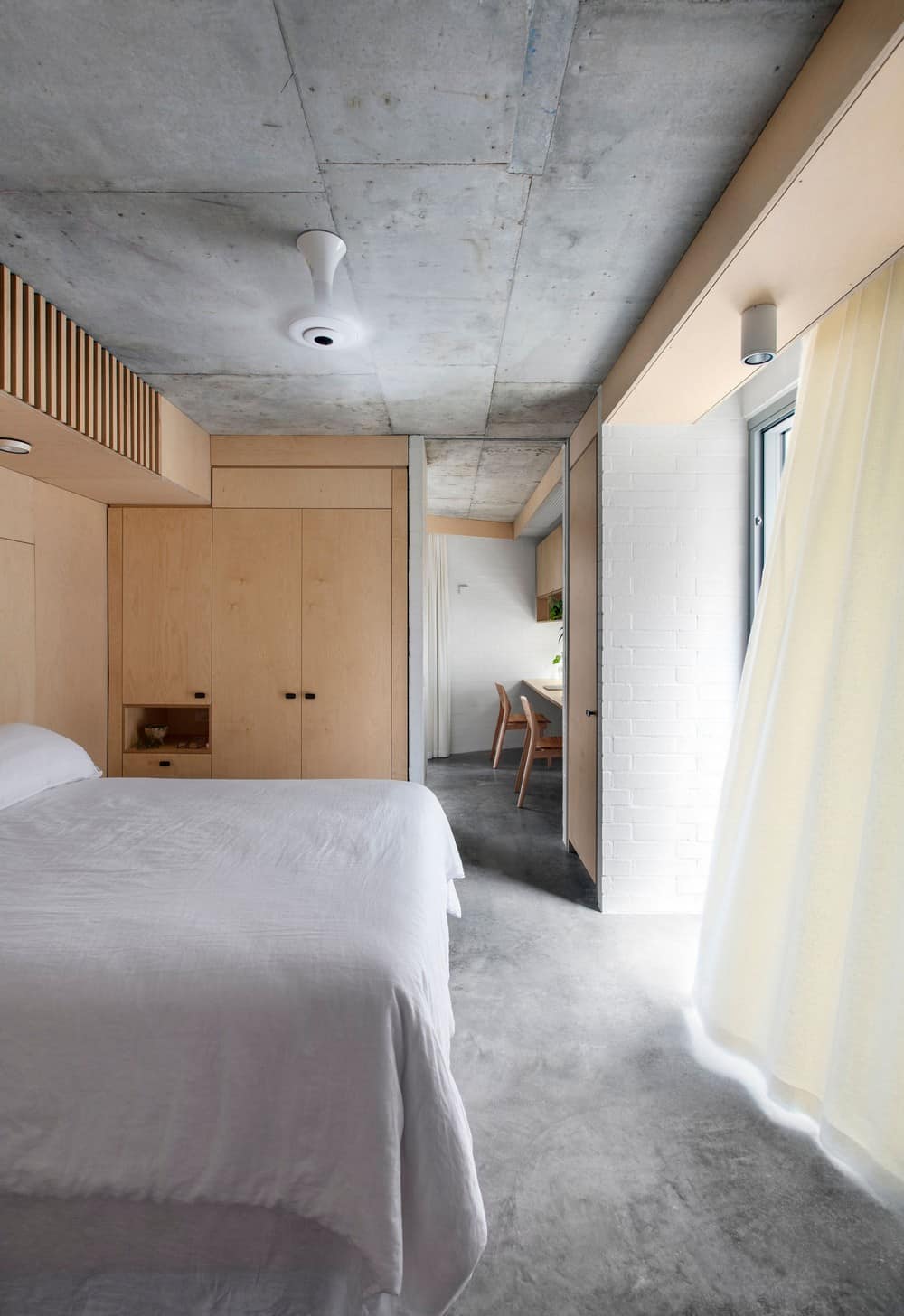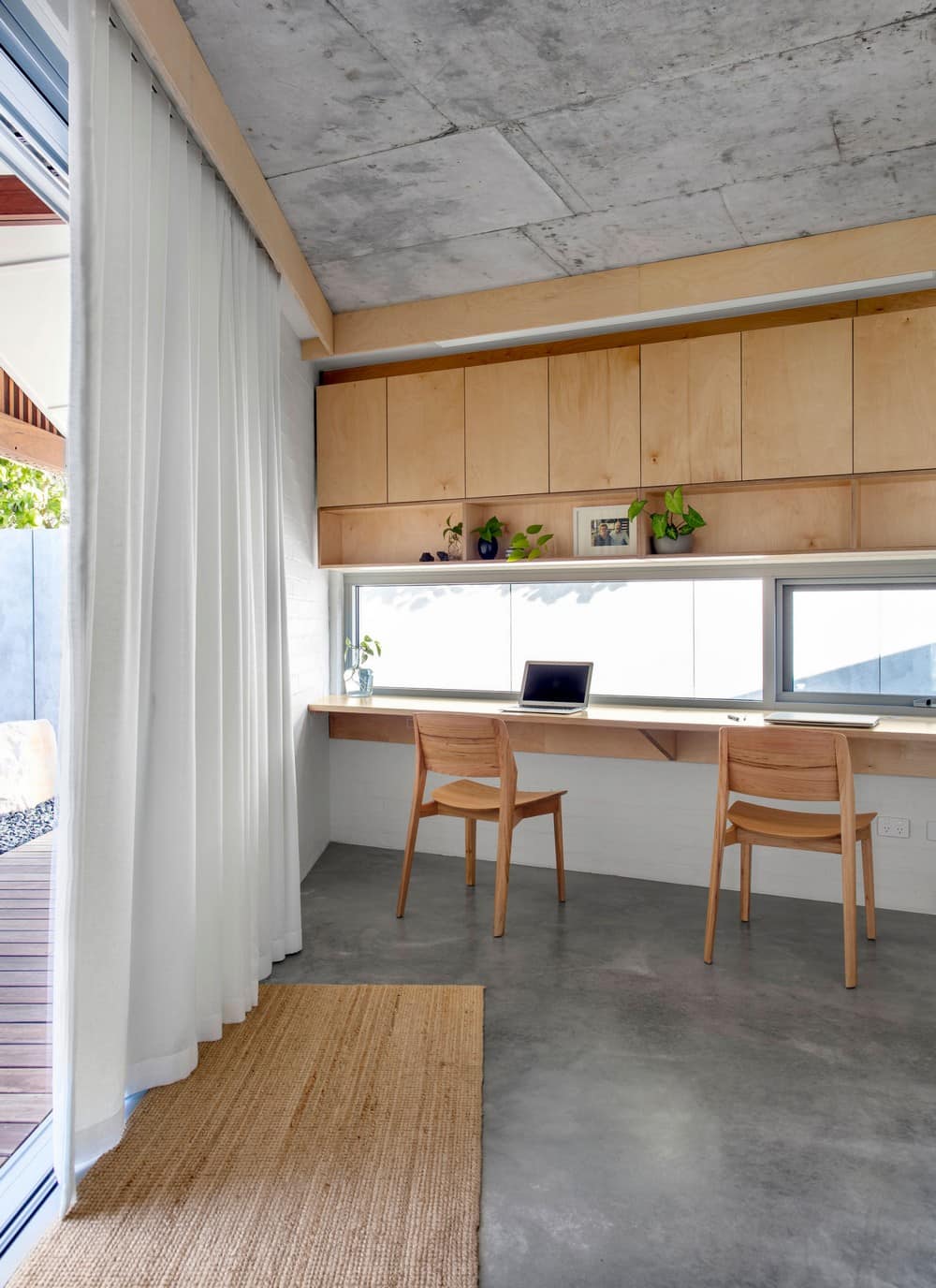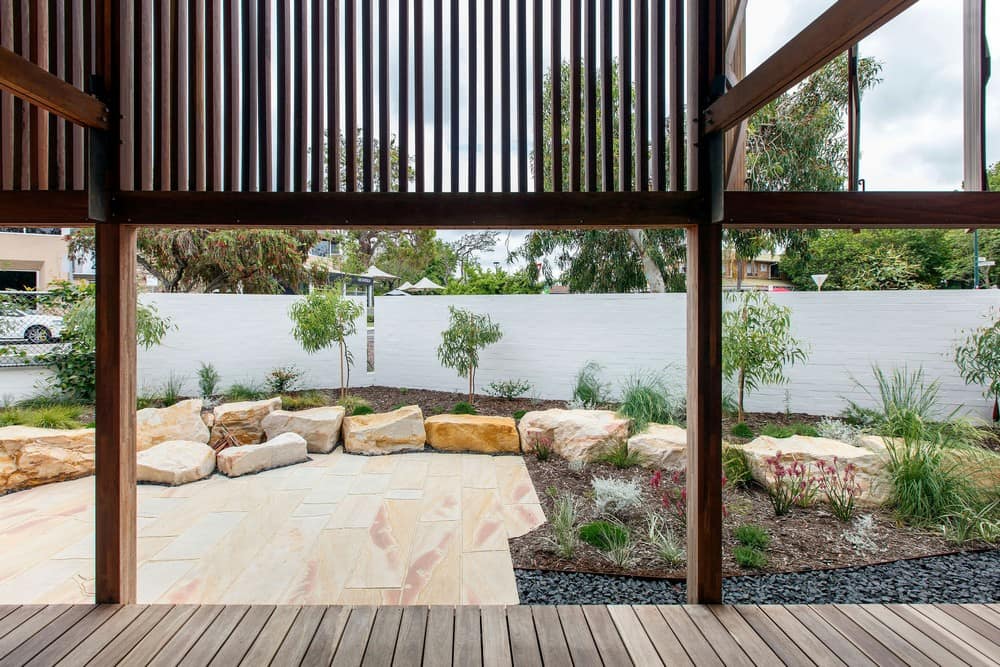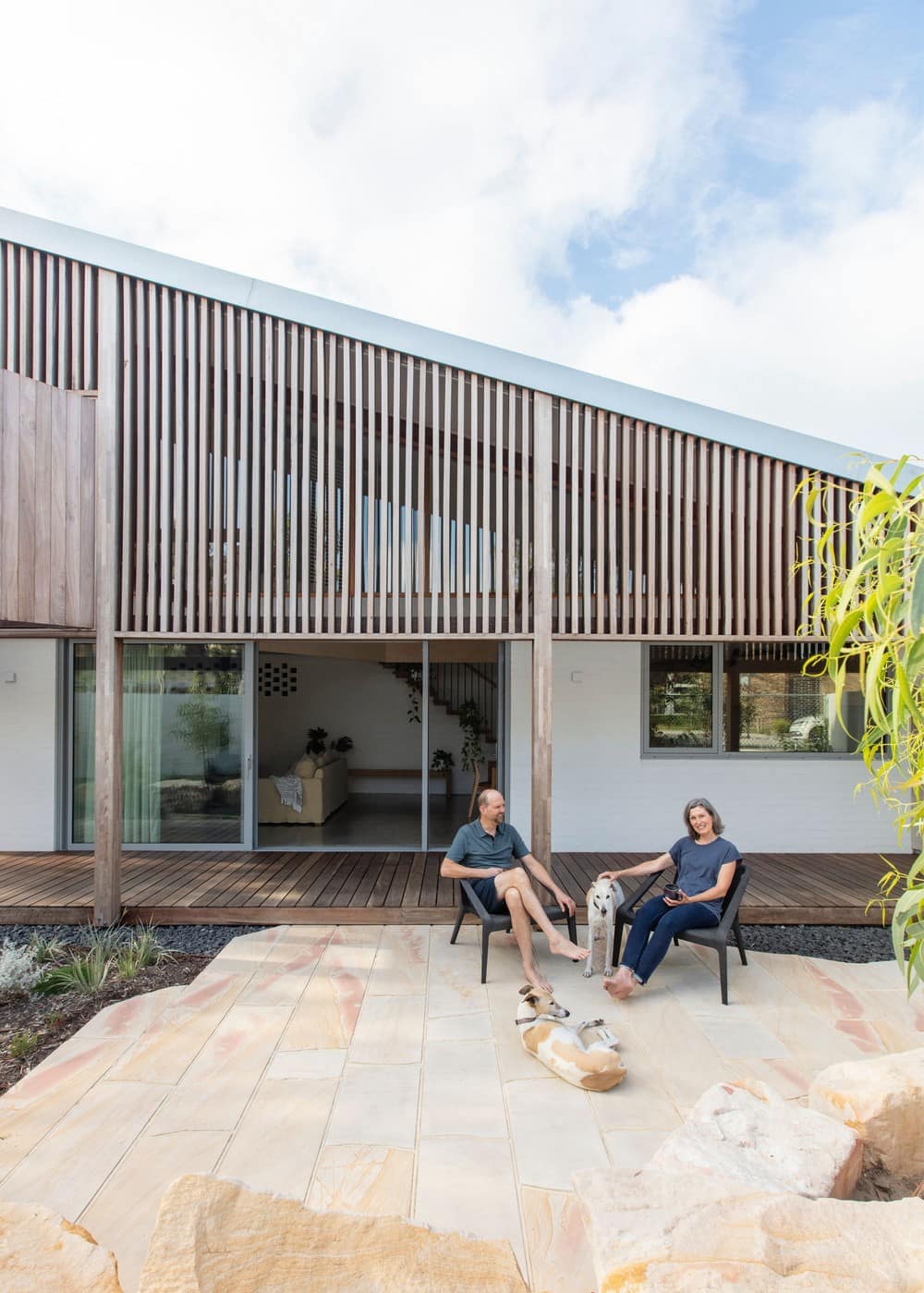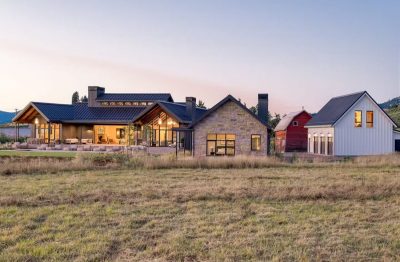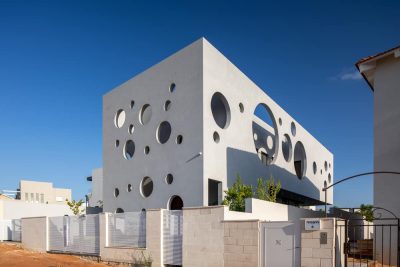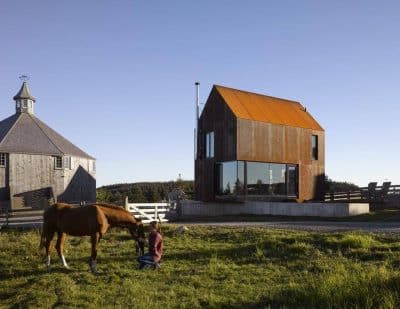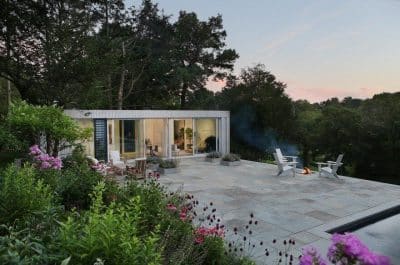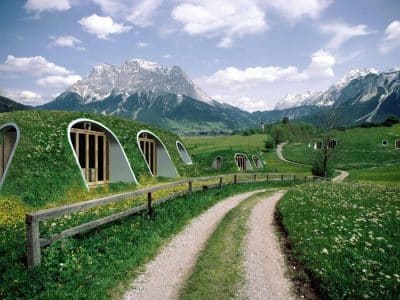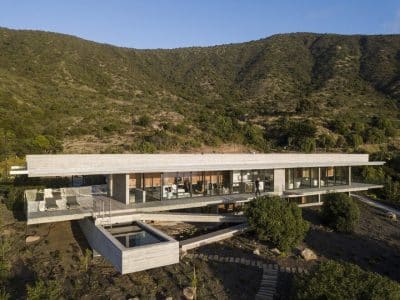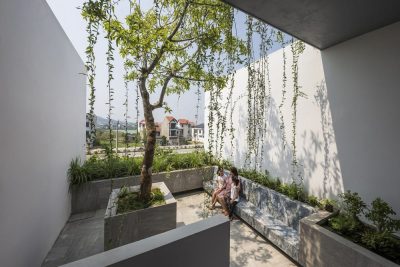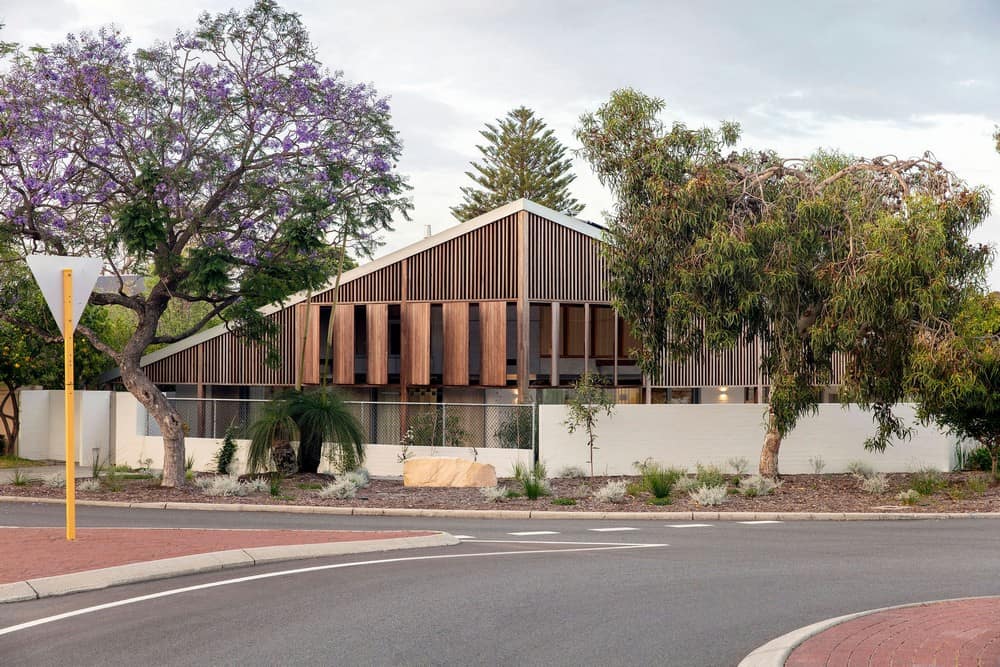
Project: Macdonald Road House
Architecture: Philip Stejskal Architecture
Project Team: Louise Allen, Philip Stejskal, Julia Kiefer, Jaime Mayger
Builder: Portrait Custom Homes
Landscape Architect: Annghi Tran Landscape Architecture Studio
Location: Applecross, Perth, Western Australia
Area: 200 m2
Year: 2020
Photo Credits: Bo Wong
Text by Philip Stejskal Architecture
A new house in Applecross for a couple whose children have left home, yet plan to return often. One that will allow them to age in place, with all the amenity of their previous house.
Situated on a busy round-about at the southern end of a bustling suburban centre, our clients’ wish was for connection to, yet also privacy from, this activity node.
Coupled with their desire to down-size and ours to create a graduated streetscape around the corner – the design developed as a predominantly single-storey building incorporating a mezzanine for additional bedrooms — a configuration which enables a central peak to address the intersection, with tapered edges respectful of low lying neighbours.
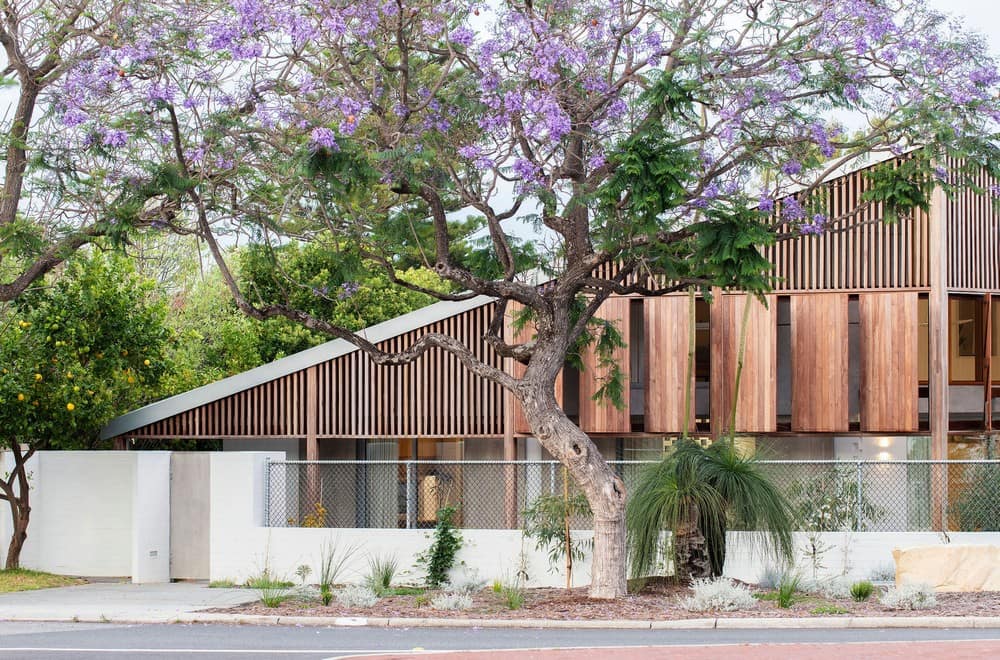
The Macdonald Road House replaces a modest, single storey attached dwelling – one of a triplex built in the 1980s – and occupies a prominent position on a roundabout. They asked for something ‘iconic’, so we created a building that makes a significant contribution to its immediate setting, recognizing the site’s role as unofficial gateway to the local shopping precinct.
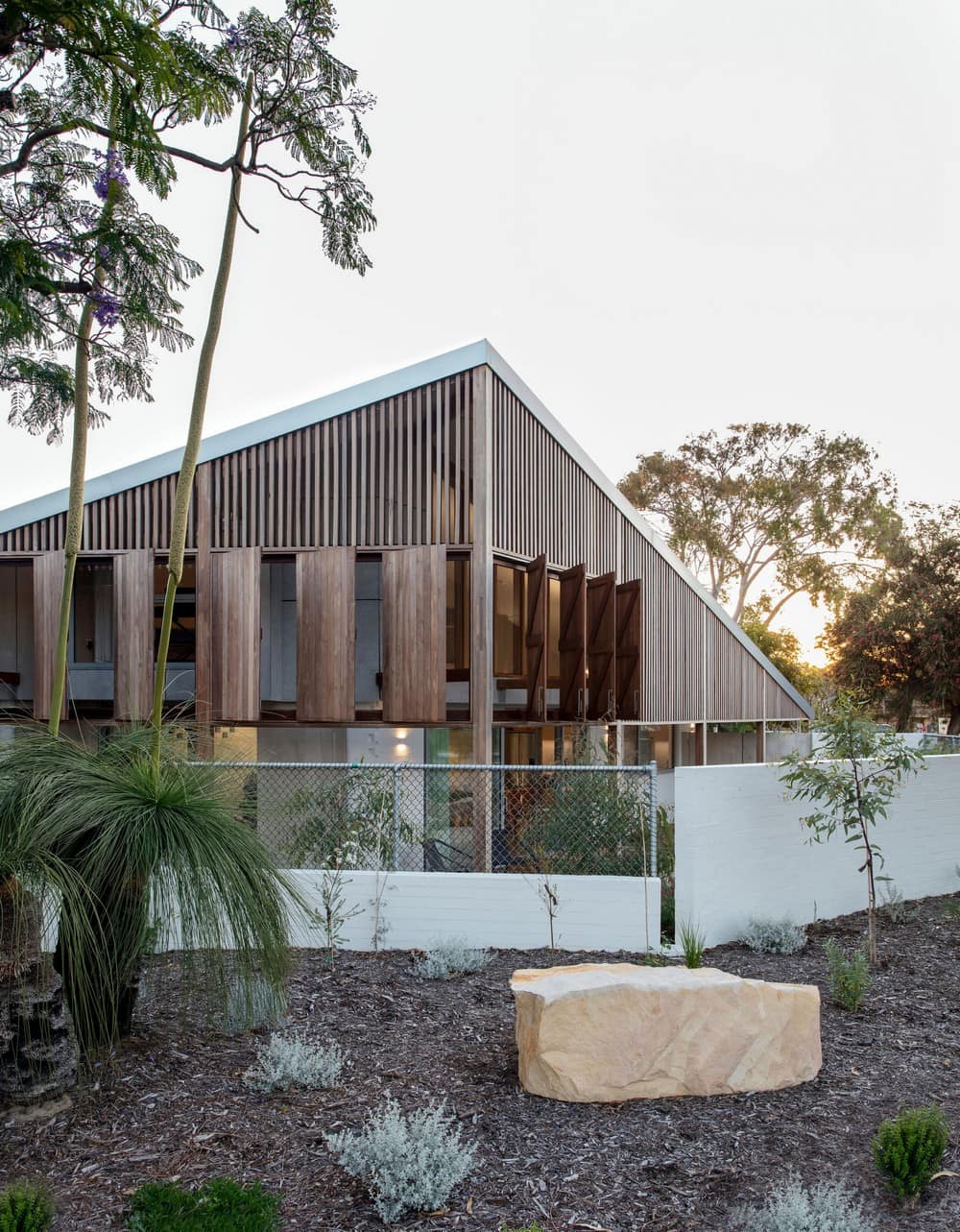
We looked firstly to history – particularly the great Australian homestead – and also its mid-century counterpart; a type that was well represented in Applecross until the advent of the MacMansion. These forebears informed our response to climate, scale and form. Like the wide brim of an Akubra, the homestead verandah offers protection and reprieve from the heat. In this case, it protects the northern façade and wraps around to the eastern elevation – which overlooks busy Ardross Street – providing both solar protection and a privacy buffer. The verandah transforms into a vertical batten screen, which is operable in parts, to allow winter sun to enter the house.
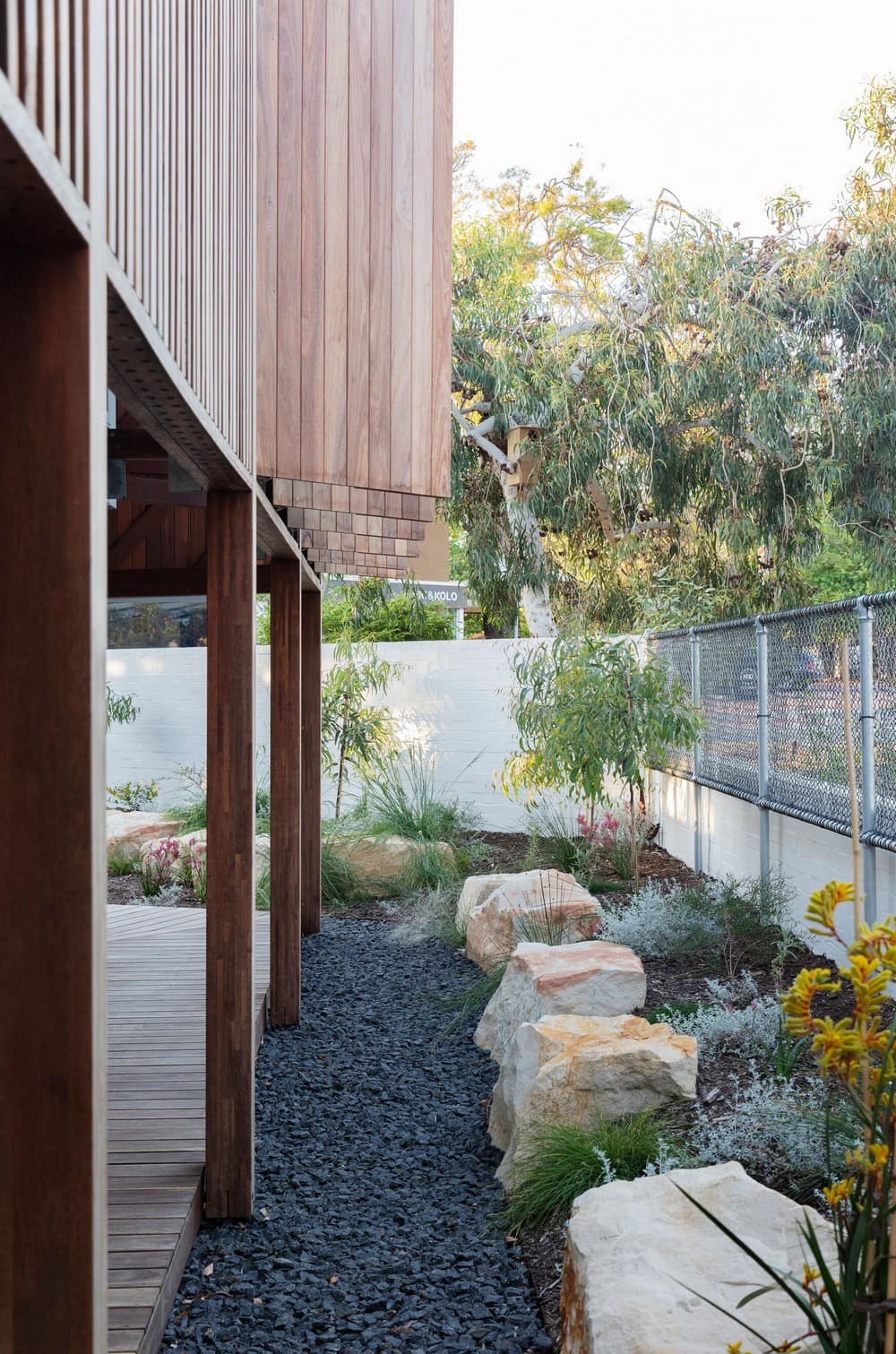
Internally, the parallelogram-shaped plan arose from orientation and street alignment considerations, with public spaces located closer to the outer edges. Upstairs, guest bedrooms and a second bathroom are accommodated under the cloak of the roof. The massing is arranged so the tallest, middle section addresses the corner, while the roofline tapers down to low tips that abut both neighbors.
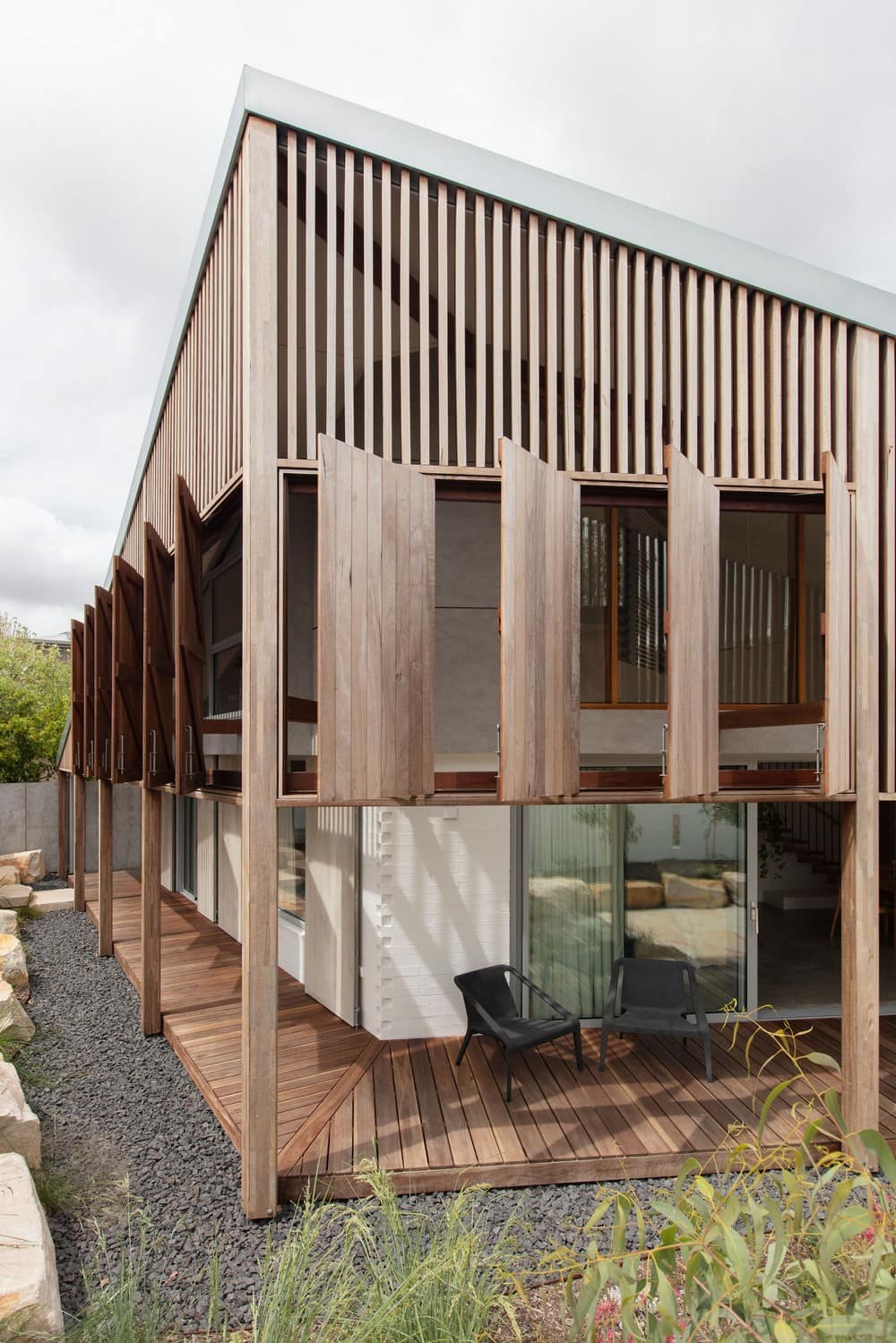
Despite its location beside the roundabout and commercial hub, the house offers a sense of quiet and retreat behind its solid brick fence and spotted gum veil. We worked closely with our landscape architect to create a sanctuary; a unified domain of building and garden. We also collaborated with structural engineers, energy assessors, lighting and air-conditioning experts on the design, which incorporates Passivhaus principles (sealed perimeter, lift&lock sliders) suited to this climate. Hydronic in-slab heating and a heat recovery ventilation system ensure warmth and good indoor air quality when the house is sealed in winter.
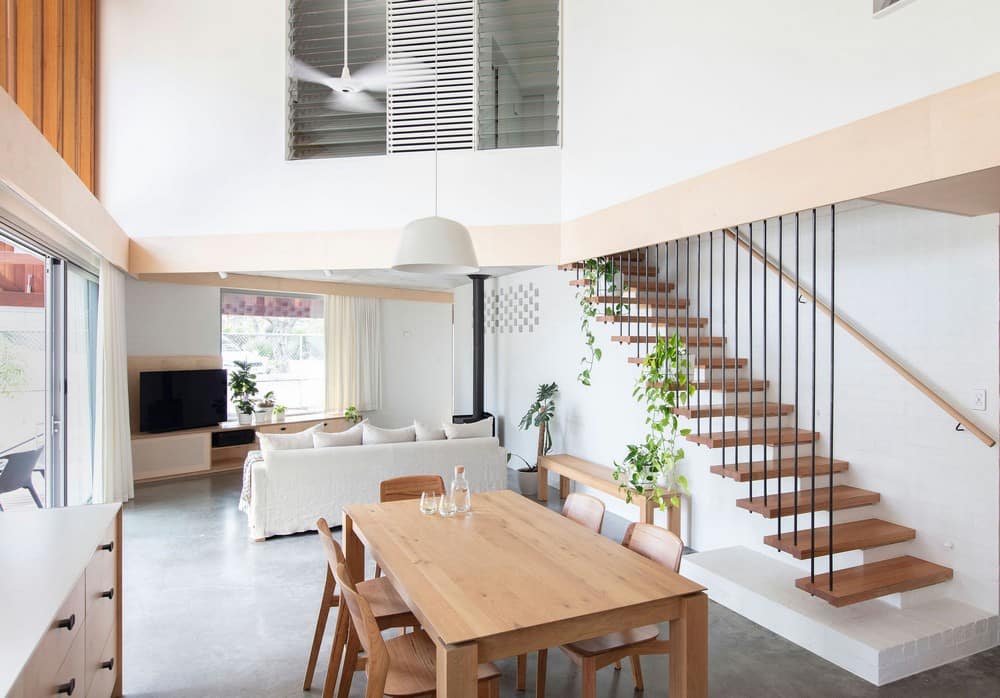
In summer, it can be easily cooled at night thanks to cross ventilation via brick perforations in the central core. Generous internal thermal mass stabilizes internal temperatures all year-round, while passive design principles (orientation, protection of openings) help to minimize heat-load in summer and maximize it in winter. Have we satisfied the brief to design an ‘iconic’ building? According to the Cambridge dictionary definition – “to represent something of importance” –then, yes, we believe so.
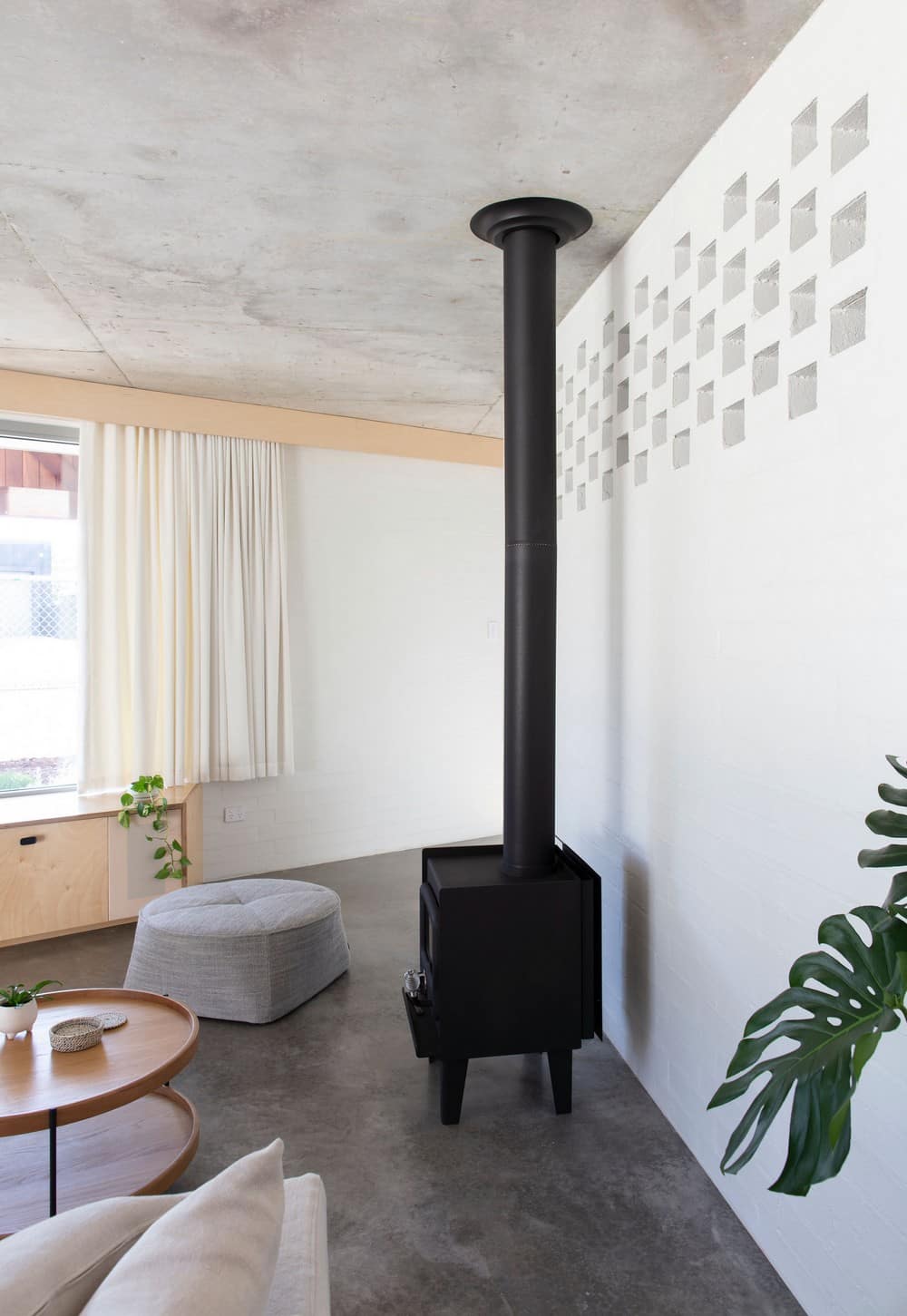
Our work has the potential to transform our city in small and large steps, bit by bit, taking what is inefficient and undignified (perhaps lacking light, or ventilation, or joy) and delivering all of those qualities instead. This approach delivers benefits to our clients, and to the surrounding community; creating buildings that are generous in their interaction with the public domain, humble yet rich in what they contribute. The Macdonald Road House is conscious of its place and the lineage of buildings that have embraced the same values throughout history.
